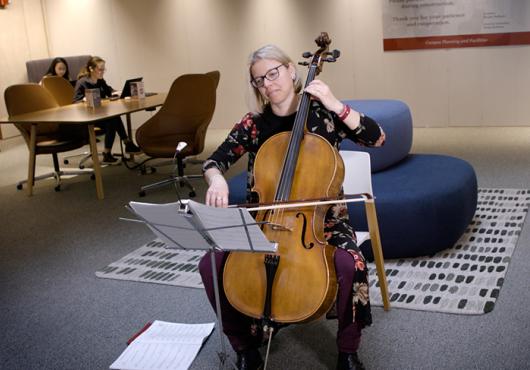
The iron lung recently acquired by the Warren Anatomical museum was on previously display at Brigham and Women’s hospital. Image: Maya Rucinski-Szwec.
The iron lung, a device that saved thousands of lives during polio outbreaks in the mid-20th century, was developed by Harvard Medical School faculty members Philip Drinker and Louis Agassiz Shaw, making its clinical debut at Boston Children’s Hospital in 1928.
Iron lungs saved the lives of polio patients, mostly children, who weren’t able to breathe on their own as a result of the disease. The device operated similarly to a vacuum where a motor would create and release pressure around the body to force air in and out of the lungs while the patient’s head rested outside of the machine, sealed off by an airtight collar.
Now, one of the earliest models of this famed lifesaving device is one of the newest acquisitions of the Warren Anatomical Museum at the Francis A. Countway Library of Medicine.
It’s an important addition to the museum’s collection, said Dominic Hall, curator of the Warren Museum.
“The museum has felt incomplete without an iron lung. The development of the device is an important story for Harvard and Boston medicine,” Hall said.
Recently acquired from Brigham and Women’s Hospital, the working iron lung was moved in September from the Knowledge Center at the Brigham Education Institute, where it was on display, to the Warren Museum, where it will be used for educational purposes.
Historic Lifesaver
The first model of the iron lung is known as the Drinker Model and was named after HMS professor Phillip Drinker. But the Warren Museum’s recently acquired iron lung is actually an early model from the J.H. Emerson Company in Cambridge, Mass., dubbed the Emerson Model.
The Emerson Model was completed in 1931, incorporating improvements on the Drinker Model and becoming the primary model used in hospitals around the country until iron lungs became obsolete.
Before its exhibition in the Knowledge Center at the Brigham earlier this year, the device was located in the respiratory care center of Brigham and Women’s and was still in use until the early 2000s.
The device is in good condition and still functional, said Hall, but since the development of portable respirators, iron lungs are no longer used in medicine.
To transfer the 800-pound iron lung, Hall and his team moved the device out of Brigham and Women’s to the basement of the Countway Library, navigating sidewalks and elevators carefully. The lung arrived safely without a scratch.

Hall said he is very excited about the educational potential of this addition.
“The device offers wonderful opportunities for teaching, research and public engagement as it has so many stories to tell. It’s a tangible example that explores how technological innovation and invention can have a direct, positive impact on human health,” he said. “The lung illustrates the critical importance of vaccines, as the polio vaccine drove the need for this giant device that works your lungs for you into obsolescence. It invites discussions of post-polio syndrome and its diagnosis and treatment in our current medical community.”
He added, “The BWH iron lung already has a scheduled teaching use. The HMS History of Medicine Interest Group is coming to investigate the lung in November,” Hall said.
The Warren Museum is still in search of the original prototype iron lung developed by Drinker and Shaw.
“If anyone has that in storage somewhere, hopefully on a ground floor, give me a call,” Hall said.





